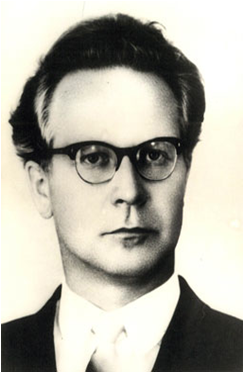
Buteyko history
Professor Konstantin Pavlovich Buteyko (1923-2003) was a Ukrainian medical doctor and clinical physician. He received his medical degree from the First Moscow Medical Institute, where he studied from 1946 to 1952.
A series of events helped him to make the connection between the respiration and health of patients with hypertension, stenocardia, asthma, and other prevalent modern serious diseases.
In the early 1950’s one of his practical assignments as a medical student involved monitoring the breathing of terminally ill patients prior to death. He observed that with approaching death, patient’s respiration got heavier. By visual observation of patients’ breathing, Buteyko was able to predict how many days or hours of life were left.
After graduation with Honorous, Buteyko continued his experiments. He discovered that deliberate acute hyperventilation quickly worsened the health of patients, while breathing less caused elimination of their symptoms. Dr. Buteyko also confirmed these findings in his own hypertension problem. He learned that the level of CO2 in his body was too low. Since it was known that hyperventilation lowers CO2 levels, he concluded that certain diseases may develop as a result of deep breathing. The data then available (in 1952) from authors such as Holden, Priestly, Henderson, De Costa, Verigo, and Bohr, seemed to confirm his hypothesis. It was known at that time that exhaling carbon dioxide by deep breathing resulted in spasms which decreased the supply of oxygen to vital organs, including the brain thus making one breathe deeper again, a vicious cycle.
Buteyko theorized that if over breathing is the cause for his problem, then by correcting his breathing pattern he may be able to cure his disorder.
Experimenting on himself, he soon trained himself to breathe in a more shallow fashion and had shortly healed himself completely.
In 1958-1959 Dr. Buteyko conducted clinical studies on nearly 200 patients. All of these confirmed his discovery. When he presented his work to the scientific forum of the institute on Janyary 11th, 1960, he found no support from any of his colleagues, who took his studies as some dirty trick.
While not receiving outright acceptance, Buteyko did gain the temporary support of Professor Meshalkin, the chairman of the Forum, in enabling the research to continue.
For several years in the 1960’s Dr. Buteyko was a director of a respiratory laboratory in Novosibirsk. Assisted by a team of two hundred qualified medical personnel and using the most up to date technology he was able to receive physiological information about the relationships between respiration and other factors.
He gradually developed his method, The Buteyko Volitional Breathing program, a system of breathing exercises and other auxiliary activities to restore normal breathing in his patients. Official statistics showed that more than 1000 patients suffering from asthma and other illnesses had recovered from their conditions using Buteyko’s methods.
Professor Meshalkin continually refused to allow a scientific trial of the Buteyko Method. Later, this was followed by closure of his laboratory and absolute repression. Buteyko’s repeated attempts to accredit his method had failed.In January 1968, following growing public support, Health Minister Academician Petrovsky, promised that he would recommend acceptance of the Buteyko Method as a standard medical practice, if Buteyko successfully treated 80% of patients with the most severe conditions which were not treatable by conventional medical treatment. Forty-six patients were taught his method and the results were astounding: one hundred per cent of the patients were officially diagnosed as cured. However, following unexplained falsified results the Buteyko's laboratory was closed. In April 1980, following trials in Leningrad and at the First Moscow Institute of Pediatric Diseases directed by the Soviet Ministry's Committee for Science and Technology, the Buteyko Breathing Method was officially recognized as having a one hundred per cent success rate.
The Soviet Health Ministry officially acknowledged Buteyko's discovery in 1983. His discovery was formally recognized more than twenty years after it had been made. It is reputed that the technique has been successfully taught to over one million citizens of the USSR.
The Buteyko method was brought to Australia in 1990 by Kyle Alberts, a business man. While visiting in Russia, he had an angina attack that, to his amazement, was successfully treated with the method. He sponsored two Russian Buteyko teachers to go to Sydney. One teacher left and the other, Alexander (Sasha) Stalmatsky stayed and taught the method.
Following an extensive media coverage and public pressure, five years after Stalmatsky began to teach the method, a formal study was finally conducted in Brisbane. Thirty nine subjects were randomized to the BBT group and a control group. The control group was taught a general asthma education program and physiotherapy exercises. The Buteyko Method group significantly reduced bronchodilators use (96%), steroids medication (49%), asthma symptoms (80%), and significant improvement in quality of life was reported. No improvement was recorded in the control group. The method has had several other successful clinical trials (England, Australia, New Zealand, Canada, Ukraine, USSR).
The method was introduced to New Zealand in 1994, by Russell and Jennifer Stark. They developed an education program that provides drug-free management to help people with asthma understand and control their condition. This program has spread across the world and is taught in the U.S. since 1999.
Buteyko died on May 2nd, 2003.
References:
- Stark, Russel and Jennifer. The Buteyko New ZealandPractitioner’s Guide. New Zealand Limited, 1998.
- Rakhimov, Artour. Breathing, health and quality of life. 2006
- Rakhimov, Artour. Normal breathing: the key to vital health. 2004
- Graham, Tess. Brisbane trial
- Asthma Care Ireland website http://www.asthmacare.ie/
- http://www.buteyko.co.nz/